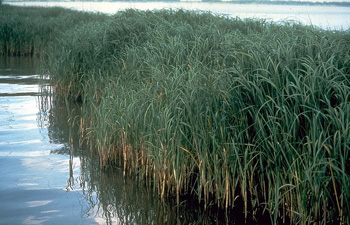Predicting the performance of plant restoration
 Plants,
Plants,  Restoration,
Restoration,  Wetland
Wetland  Spartina alterniflora in full effect.Many seasoned restoration practitioners will likely confess that establishing native plants in an area where no population currently exists is somewhat of a gamble. You can follow best management practices but the plants could still fail to establish a self-sustaining population.
Spartina alterniflora in full effect.Many seasoned restoration practitioners will likely confess that establishing native plants in an area where no population currently exists is somewhat of a gamble. You can follow best management practices but the plants could still fail to establish a self-sustaining population.
One of the uncertainties lies with finding seeds or transplants that are genetically adapted to the micro-conditions of the site.
The concept of "adaptive population divergence" in which sub-populations within a given species develop genetic adaptations to specific regional conditions can have big implications for restoration success. If you try to establish individuals that are not a well adapted for the conditions of a site, the project could fail.
To help address some of this uncertainty, Steven Travis and James Grace from USGS have developed a model for predicting restoration performance based on genetic and geographic distance between a plant source location and a restoration site. They presented the method in a new study in the journal Ecological Applications.
The results from this approach can help inform best restoration practices by establishing the maximum recommended distance that a plant source location should be from a restoration site. Since the results of this method likely vary by species, the researchers tested the approach on smooth cordgrass (Spartina alterniflora) - a wetland plant frequently transplanted into salt marsh restoration sites to initialize a vegetative foundation.
They planted cord grass clones in an experimental garden at a site in Louisiana using donor material from 23 populations spanning the plant's native range. They then measured numerous indicators of plant performance and compared the results to the geographic and genetic distance between the source location and the restoration site. They measured genetic distance by conducting molecular analysis of each source population and comparing it with a local population at the project site.
The researchers found that genetic distance was the best predictor of restoration performance. However, they also found that geographic distance - particularly the latitudinal distance - was a strong predictor as well.
This is good news because it is unlikely that many restoration practitioners can afford to do expensive genetic testing on prospective plant material for a project. Instead, the results from this approach can establish a maximum recommended distance for collecting plant material.
In the case of smooth cord grass, the researchers recommend a maximum collection distance of 300 km (holding latitude constant), which is a pretty wide area. Ideally, their modeling approach can be used to determine similar types of guidelines for other plants used extensively in restoration.
Reviewed by Rob Goldstein
Travis, S., & Grace, J. (2010). Predicting performance for ecological restoration: a case study using Spartina alterniflora Ecological Applications, 20 (1), 192-204 DOI: 10.1890/08-1443.1




Reader Comments